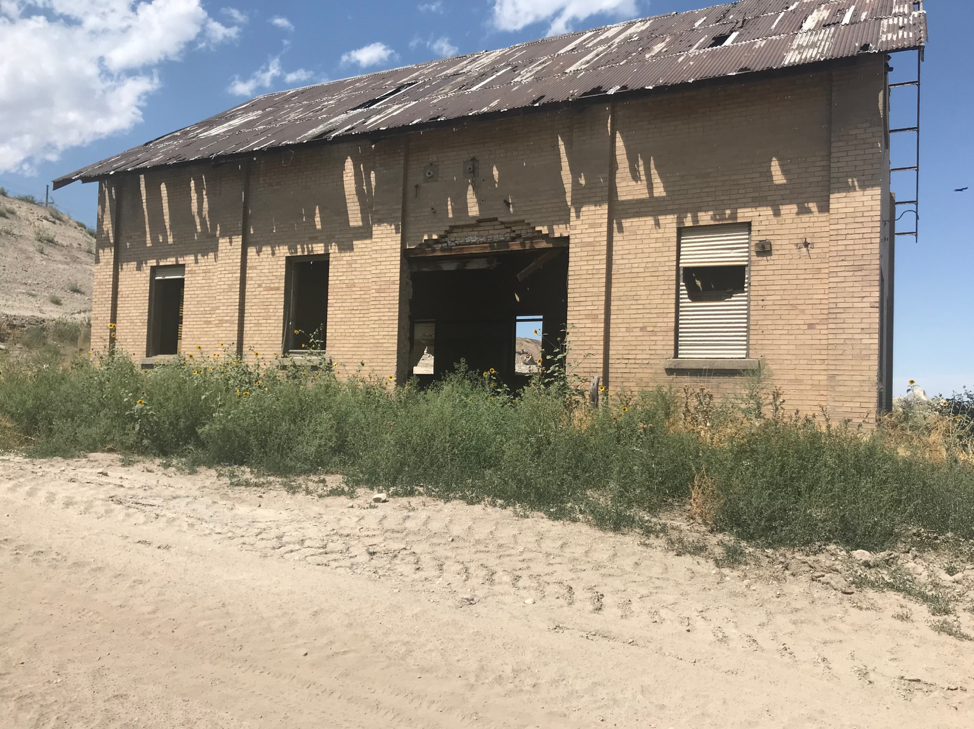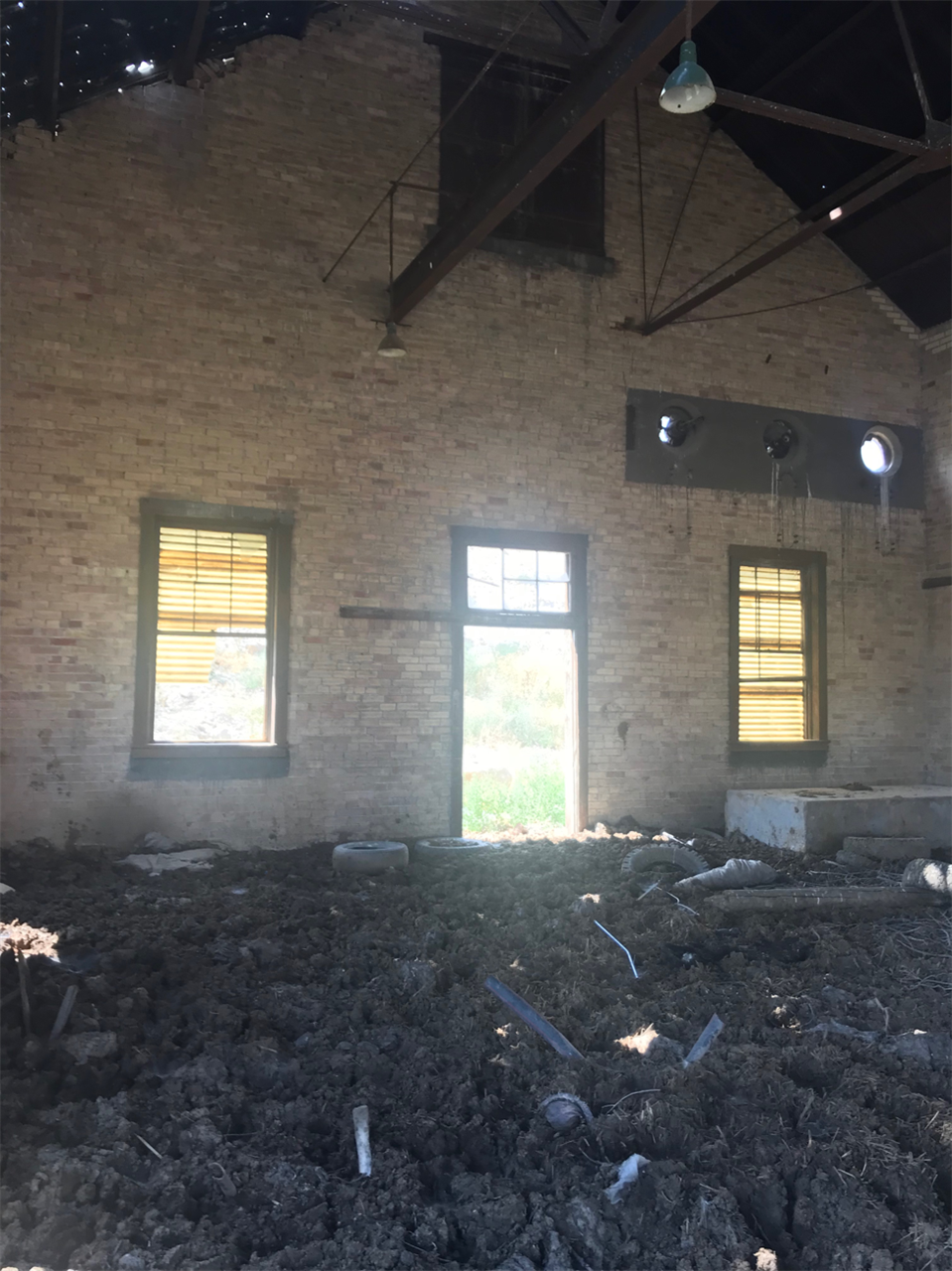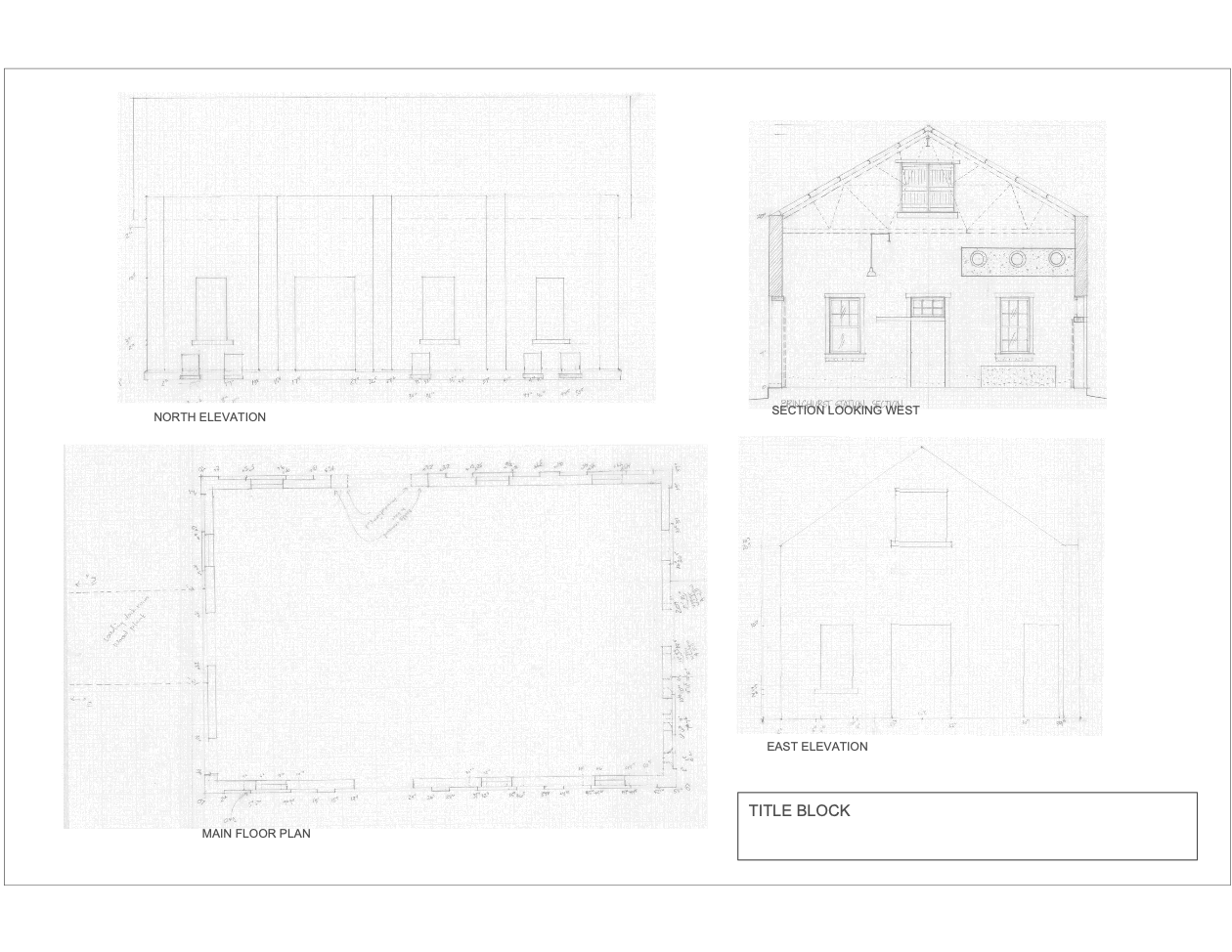by Alison Stone, Lead, Utah-VAF Legacy Project
After finishing my presentation on the Legacy Project at the Preservation Utah Annual Conference last May, I was introduced to Ross Jones who is the Vice Chair of the Preservation Commission in Bluffdale, Utah. Bluffdale had recently re-instated its Certified Local Government status with the State Historic Preservation Office (SHPO) because of concern with the acceleration of housing developments in the area and the resulting loss of historic buildings. Ross was specifically concerned about a building which was believed to have been a booster station for the electric railroads; the dominant mode of public transportation along Utah’s Wasatch Front from the late 1800s to the 1930s. Eclipsed by automobiles, there is very little evidence of their existence left. Ross wanted us to help the Preservation Commission create some record of the building before it was razed for a new housing development.
 Ross and I met at the site in August. Immediately, I was amazed by the size of the development and the amount of earth moving and grading equipment, dust, heat and lack of shade. The building was on a level area backing against a hill surrounded by makeshift roads with work vehicles roaring by. On closer inspection, it did not look any more inviting. In recent years, it had been used to house cattle in the winter and the floor was at least a foot deep in dried manure which would make measured drawing impossible if there was rain. Even better, there were three cow carcasses in various stages of mummification. Prickly weeds grew along the exterior walls. Clearly, this job would require hearty souls and a good reason for documentation.
Ross and I met at the site in August. Immediately, I was amazed by the size of the development and the amount of earth moving and grading equipment, dust, heat and lack of shade. The building was on a level area backing against a hill surrounded by makeshift roads with work vehicles roaring by. On closer inspection, it did not look any more inviting. In recent years, it had been used to house cattle in the winter and the floor was at least a foot deep in dried manure which would make measured drawing impossible if there was rain. Even better, there were three cow carcasses in various stages of mummification. Prickly weeds grew along the exterior walls. Clearly, this job would require hearty souls and a good reason for documentation.
With a little research, we discovered that the building was the Bringhurst Booster Station; one of four booster stations for the Salt Lake and Utah Railroad which was inaugurated in 1914 and originally ran 48.5 miles from Salt Lake City to Provo, Utah.1 The railroad ran on DC current and required booster stations along the route to keep the current at the necessary voltage. The stations housed Westinghouse generators equipped with 250-KW, 60 cycle, three phase, 750-volt rotary converters which operated at 1500 volts in series.2 Our research did not reveal any other known surviving booster stations; once a common sight along train routes. We decided to move ahead with the project.
We had to swing into high gear; the developer agreed to hold off on demolition for ten days. I sent out a call for volunteers willing to help and got a positive response from seven people. Considering the size of the building, the number of people available and the time limitation of one day, we realized that we would not be able to thoroughly document the station with traditional measured drawing methods. What presented was an unplanned opportunity to implement a more wholistic approach to modern documentation practices; adding a complementary technique and documentation tool. To that end, we used laser measures for the trusses in the ceiling and other highpoints and a drone operator who created a 3D model of the building’s exterior;3 these added to the measured drawings we were able to create of the same views. We are proud of the archive we are able to leave the city of Bluffdale and SHPO of this piece of the vernacular landscape.
During the afternoon the developer stopped by the because he was curious about what we were doing. On site Steve Cornell, Historical Architect SHPO, and David Amott, Acting Director, Preservation Utah, had an interesting conversation with the developer where he said that he had never considered saving the building. It was always slated for demolition because he was focused on creating flat spaces for more homes and the station’s site was going to be raised to meet the top of the hill it backed onto. It was more expedient to add enough dirt to raise the entire area by 8 ft. than keep the building for offices or as a club house. It was an amicable conversation during which he was pleased to tell us that they were going to save some of the brick for the entrance gate and possibly some markers throughout the development and could he have copies of the drawings for the club house. The irony is that the name of this huge new development is Bringhurst Station.
1. https://utahrails.net/utahrails/salt-lake-utah.php
2. https://utahrails.net/utahrails/swett-salt-lake-utah.php
3. Kellen Hatch, Bringhurst Station: https://sketchfab.com/3d-models/bringhurst-booster01-0d5c119b139a489c9160137f2abbda3b